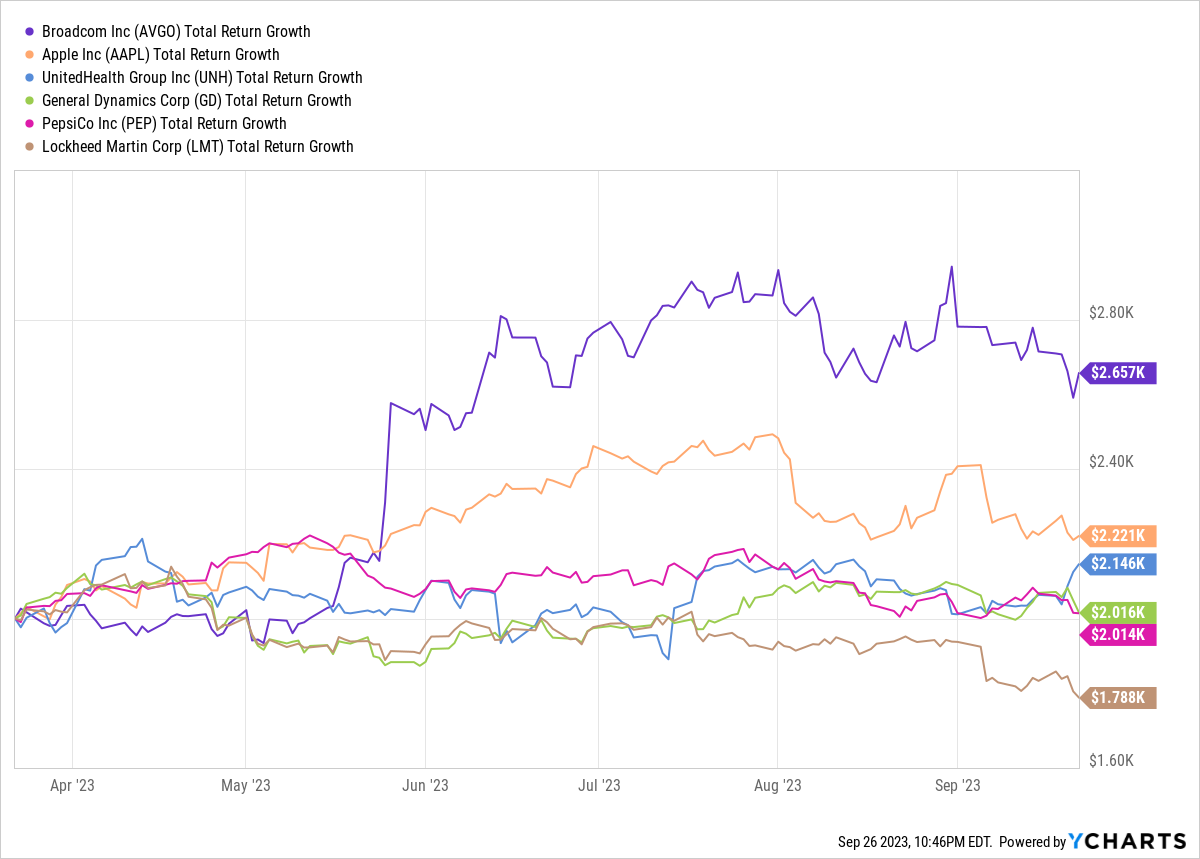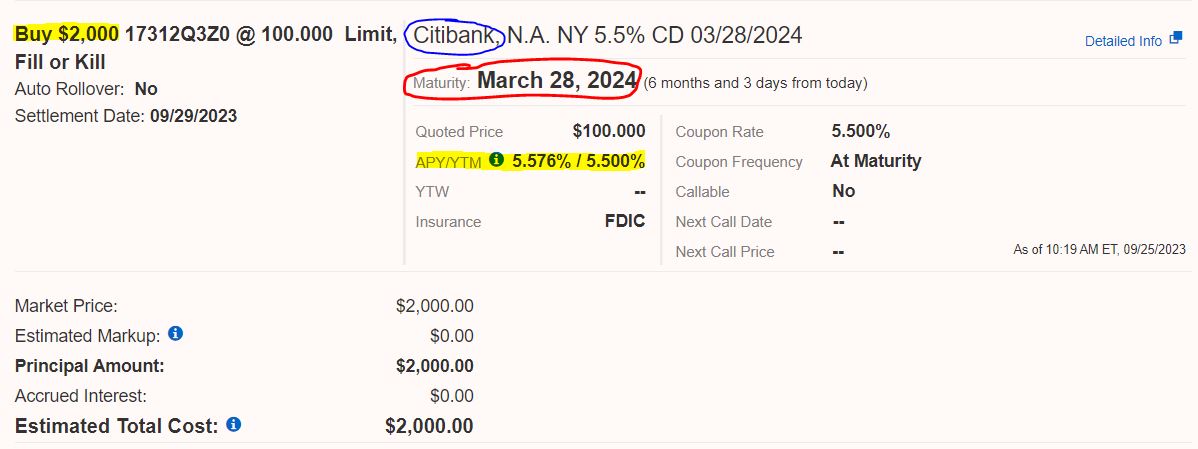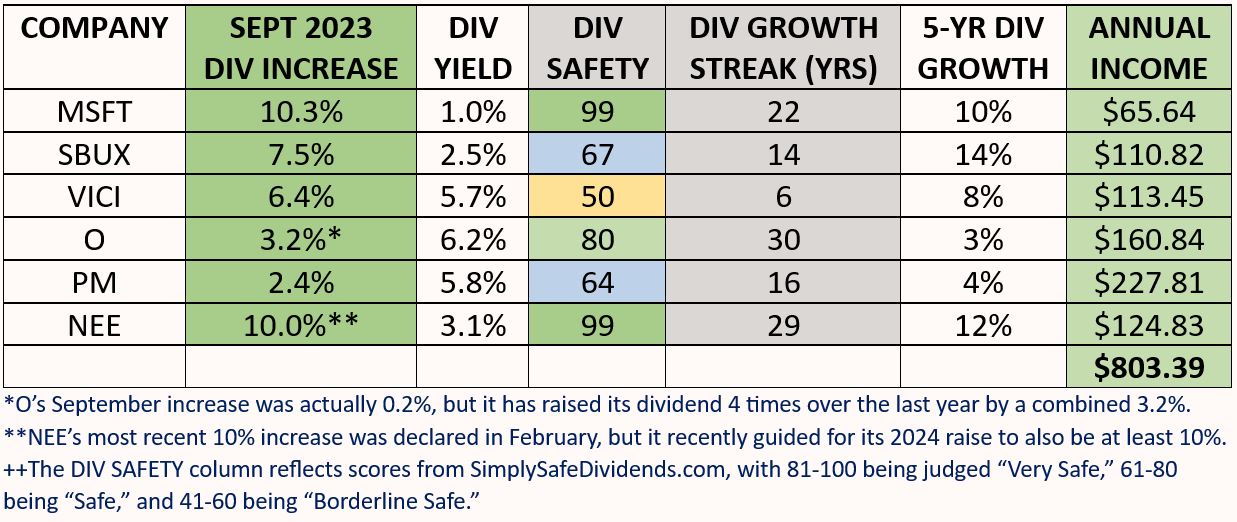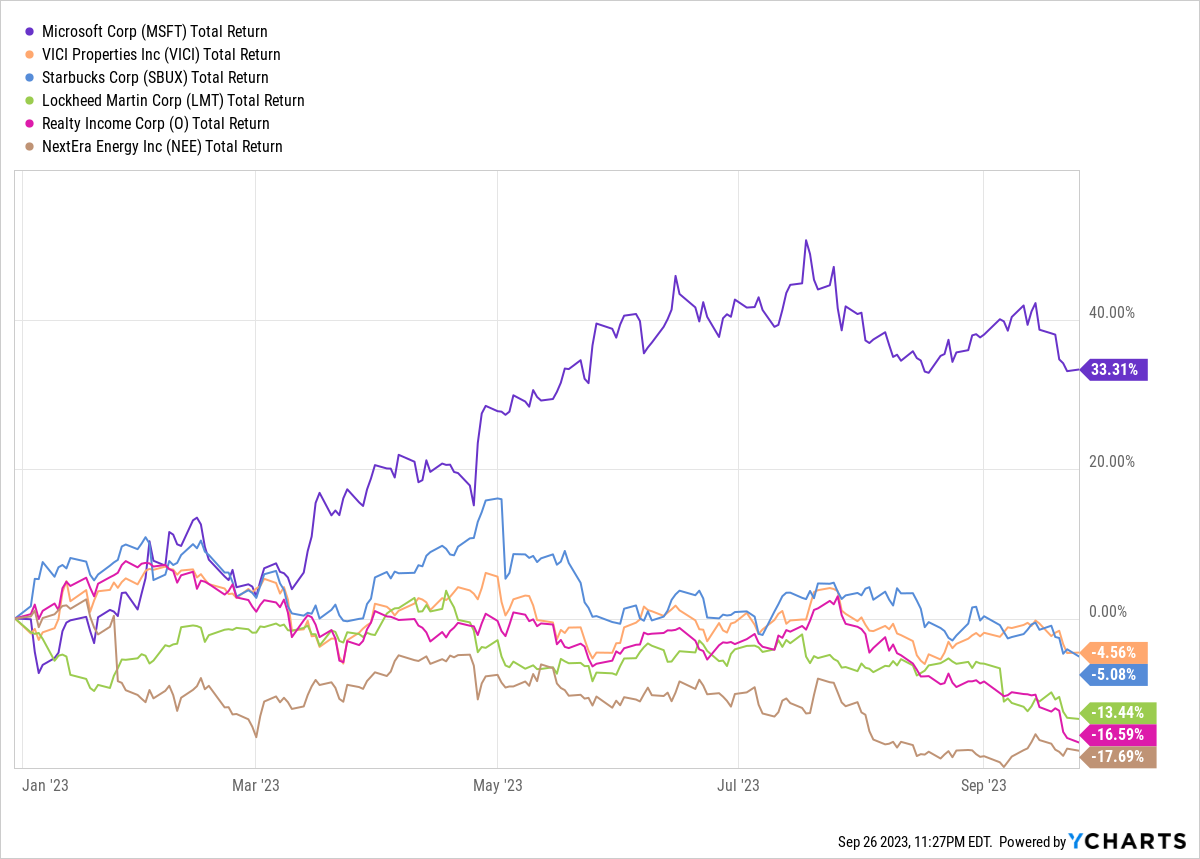Since we last bought stocks for our Income Builder Portfolio three months ago, there’s been all manner of not-so-wonderful economic news – from union strikes to Fed rate hikes, from gas prices soaring to the costs of warring, from surging debt to a government shutdown threat.
We weren’t trying to time the market, we simply were working on some other projects. As it turns out, with stock prices mostly falling, it was a pretty good summer to sit things out.
Well, we’re back. And we just made a half-dozen buys of reliable dividend-growing stocks to begin the next phase of the IBP’s existence.
Quick IBP Recap
In my previous article, back in July, I talked about how we wrapped up Phase 1 by hitting our Income Target of $5,000 within 7 years of the portfolio’s inception.
We were proud that we not only achieved our goal a year and a half ahead of schedule, but also that we had done so without sacrificing total return.
The headline captured the spirit well: Dividend Growth Investing Works!
We decided to keep the IBP going because there are still plenty more lessons to learn about portfolio construction and management, plenty more stories to tell about investments we want to make.
Due to other financial commitments, this site’s co-founder (and IBP money man), Greg Patrick, did decide to reduce his monthly allocation from $2,000 to $500, but that will not change the stocks I select on his behalf or the ideas I discuss.
September Buys
Having taken the summer off, we just kicked off the fall with the equivalent of three months worth of buys, as Greg provided $1,500 for the transactions.
The first matter of business was a 6-month brokered CD that matured on Sept. 22, paying $51.92 in interest (and, of course, returning the original $2,000).
That gain, the equivalent of a 5.2% annual yield, might not seem like much, but it was totally safe, federally insured income.
No, it didn’t beat what a $2,000 investment in top IBP performers such as Broadcom (AVGO), Apple (AAPL) or UnitedHealth Group (UNH) would have brought … but the CD did provide better total return than the likes of General Dynamics (GD), Pepsi (PEP) or Lockheed Martin (LMT) — stalwarts in this and thousands of other DGI portfolios.

On Monday, Sept. 25, we reinvested the $2,000 principal into another 6-month certificate – this one with a 5.5% yield.

Greg and I liked the idea of locking in a sure 5.5% on this cash while giving the market time to see what’s next for the Fed and the overall economy.
Combining the interest paid on the previous CD with Greg’s new allocation, it made $1,552 available for stocks. I used that Sept. 26-27 to add to six already-existing IBP positions: NextEra Energy (NEE), Microsoft (MSFT), Starbucks (SBUX), Philip Morris (PM), Realty Income (O) and VICI Properties (VICI).

NextEra is the nation’s largest utility. Coffee giant Starbucks and international tobacco purveyor Philip Morris are top names in their industries. Realty Income and VICI are real estate investment trusts (REITs) that focus largely on retail space and casinos, respectively.
And Microsoft is … well … Microsoft, an innovative tech wonder that most recently has added leadership in the Artificial Intelligence realm to its impressive résumé.
I have discussed each of these businesses numerous times over the years. The IBP home page (HERE) includes links to every article I’ve written, as well as a look at the entire portfolio.
Income Report
To say these companies are committed to dividend growth would be the understatement of the decade.
Two — Realty Income and NextEra — are Dividend Aristocrats, having increased their payouts for at least 25 consecutive years. A third, Philip Morris, is the international spin-off of Altria (MO), a Dividend King with more than a half-century of dividend-growth history.
Five of the six announced hikes in September. The other, NextEra, recently reiterated its plan to increase its dividend by 10% in 2024, which would be its eighth consecutive year of double-digit divvy growth.

With these buys, the six positions are expected to contribute about $803 to the IBP’s income stream over the next 12 months, roughly 15% of the portfolio’s $5,203 projected total.
Valuation Station
The Federal Reserve’s decision to combat inflation by raising interest rates has resulted in higher borrowing costs for both businesses and individuals. That can make things rough for many companies, but rate-raising cycles can be especially painful for capital-intensive industries such as utilities and REITs.
The following graphic shows how difficult the environment has been so far in 2023 for most of the companies we bought in September, with NEE and O really getting punished.

As misfortune would have it, a bad forecast issued Wednesday by NextEra Energy Partners (NEP) — NEE’s so-called “YieldCo” — made NEE guilty by association … and the stock lost another 8% to close under $60.
Even though it’s never fun for something like that to happen just one day after making a purchase, the NEP situation doesn’t make me lose my confidence in NextEra. I believe NEE will continue to be a good long-term performer and reliable dividend grower.
For those interested in NEE, it creates an even better buying opportunity for the beaten-down stock of a well-run company. It’s rare to get NextEra at a yield greater than 3%, so I actually bought a little more for my personal portfolio at $59.95/share.
If there’s any validity to the average 12-month target price of the 11 analysts monitored by TipRanks, NEE now has a 43% upside.

Utilities and REITs are hardly alone in getting dinged by factors such as Fed rate hikes, Russia’s attack on Ukraine, China’s economic woes, and political shenanigans in the United States.
Even Microsoft, as fundamentally sound as any company in the world, is down 11% from its mid-July high.
Betting on strong companies during rough times often brings rewards to long-term-focused investors, and most analysts believe all six of our September choices will rebound strongly over the next year or two.

Wrapping Things Up
Although inflation is still higher than many find comfortable, it has come down significantly since the Fed started raising rates.
Most economists believe there could be one more small hike this year, followed by gradual reductions in the second half of 2024. If and when rates start falling, and some of the other macro issues get resolved, high-quality businesses will lead the market higher.
The Income Builder Portfolio is filled with such companies. And just as we didn’t panic during previous downturns, or even during the market’s 2020 pandemic plunge, we’re certainly not going to panic now.
Heck, I’m already looking forward to making our October buy.
— Mike Nadel
All you have to do is own a small handful of these unique stocks... [sponsor]And you could make more money in 2023 than you would by trading, chasing the latest "hot" stock, or doing anything your broker tells you. Get the details here - including the name of my #1 stock.
Source: Dividends & Income


